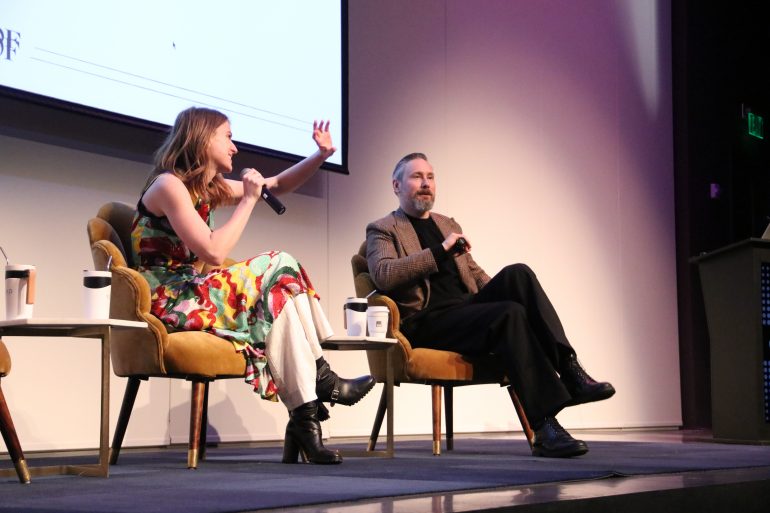The President of Business of Fashion Nick Bluden and Global Head of Strategic Partnerships Johanna Stout joined students in a discussion about SCAD’s hand in fashion’s future.
Bluden began the discussion with a macro look at the fashion industry. He stated that there is an average growth of 3.5% estimated for 2020, which, while it is slower than last year (2019 was at 4%), is better than both 2016 (1%) and 2017 (2%). Keeping in mind that 3.5% is an average, some multiple regions and categories are predicted to grow at a much higher rate.
Asia, the Middle East and Africa are three of the top regions predicted to grow exponentially within the next year; in regards to categories: sportswear, handbags and luggage are the ones to watch. In retail, both luxury and discount are expected to do notably well but anything that lies within the middle-ground may face some financial struggles.
BOF alongside forecasting company McKinsey creates an annual State of Fashion Report to analyze and illustrate the top ten forces impacting the global fashion industry. “Fashion players are under pressure to be digital-first and fully leverage new technologies, to improve diversity across their assortments and organizations and to address the growing demand for the industry to face the sustainability agenda head-on.”
We picked four out of the ten forces we thought proved most vital but the full list can be read in the State of Fashion 2020 Report.
1. Beyond China
Disclaimer: All work and analysis was done before the emergence of the Coronavirus.
“Some successful players have become over-reliant on China, companies should consider spreading their risk by expanding to other high-growth geographies.” China became a pot of gold to fashion companies. China is currently the single largest fashion market on the planet although extremely difficult to navigate. Other markets that are less saturated but have a similarly large growth opportunity like Brazil, Indonesia, India and Russia are forecasted to be where corporations may look to expand.
2. Next-Gen Social
“Traditional engagement model struggles on established social media platforms; players need to rethink their strategy and ways to maximize their return on marketing spend.” Large social platforms such as Facebook and Instagram are beginning to reach marketing saturation. Therefore, companies are struggling to maintain the consumer engagement they expected. BOF predicts that marketing budgets will move away from large platforms and into more niche ones (such as TikTok) to take advantage of smaller opportunities. There will also be a shift in the type of content created for these platforms. High-quality content geared specifically toward social media instead of creative content used across multiple platforms will be more successful.
3. Sustainability First
“Players need to swap platitudes and promotional noise for meaningful action and regulatory compliance while facing consumer demand for transformational change.” Bluden himself said that, out of everything, Sustainability First is the single biggest thing in 2020. “It is both the biggest opportunity and challenge facing the industry.” This fact that sustainability has gone from being whispered among the halls of corporations to openly discussed in boardrooms is an effect of consumer expectations. Businesses will have to focus on new models like resale, rental and avoiding overproduction.
4. Inclusive Culture
“More companies will elevate diversity and inclusion as a higher priority, embed it across the organization and hire dedicated leadership roles.” Companies have been under pressure to be more diverse in their workforce but in 2020, we’ll see the push move from not only the employees but to the boardroom. We will also see a change in the content created which will instead be an authentic want for inclusion.
After the analysis of the State of Fashion Report, Stout shared some exciting news. As a BOF Professional Partner, all SCAD students have access to a BOF Professional account. As the authoritative voice of the global fashion industry, their mission with the Professional accounts is to “build fashion’s global membership community to open, inform and connect the industry.”
This partnership gives SCAD students unlimited access to all BOF resources. Not only do they post hard-hitting and in-depth editorials, they also provide research tools. These include case studies, practical how-to guides, digital live events and online courses with industry professionals. They also offer access to their BOF 500 Index, information on top leaders in the industry and BOF Careers, a job search site.
SCAD is the first major university to join the BOF Professional Partnership program.
Words by Hana Lorne

